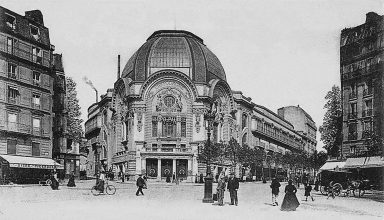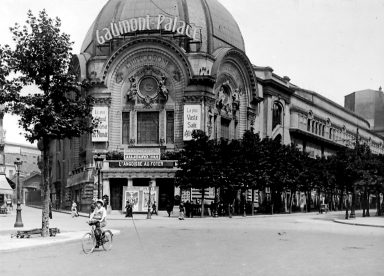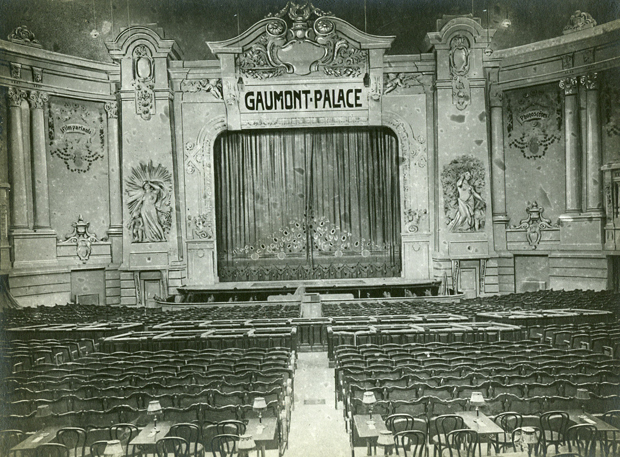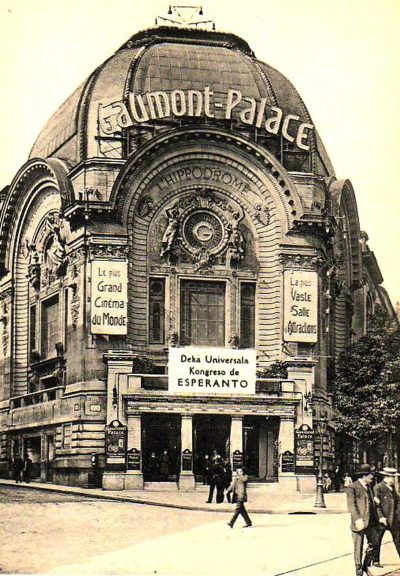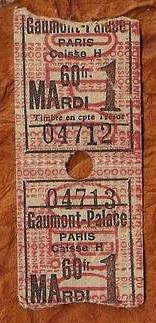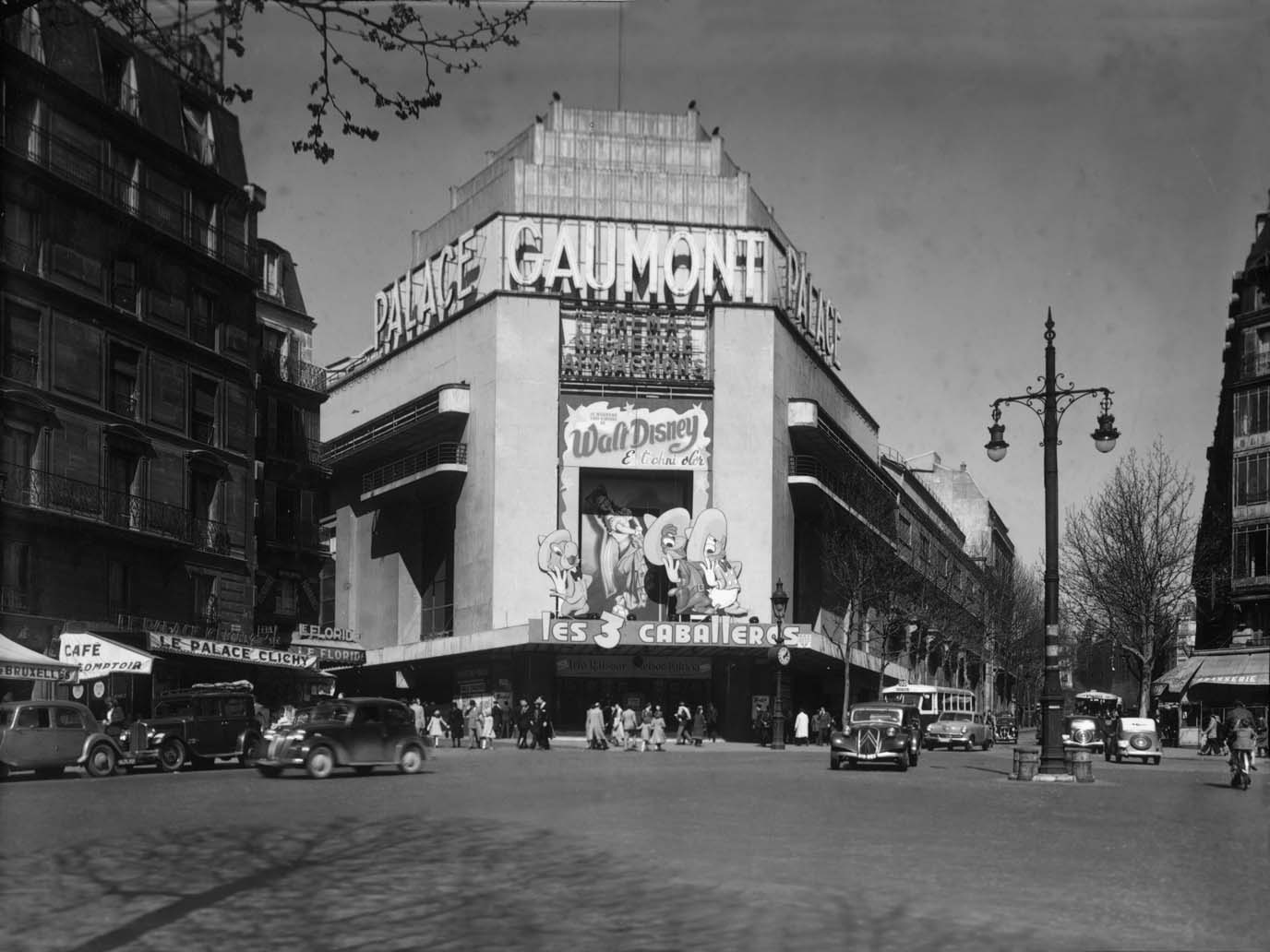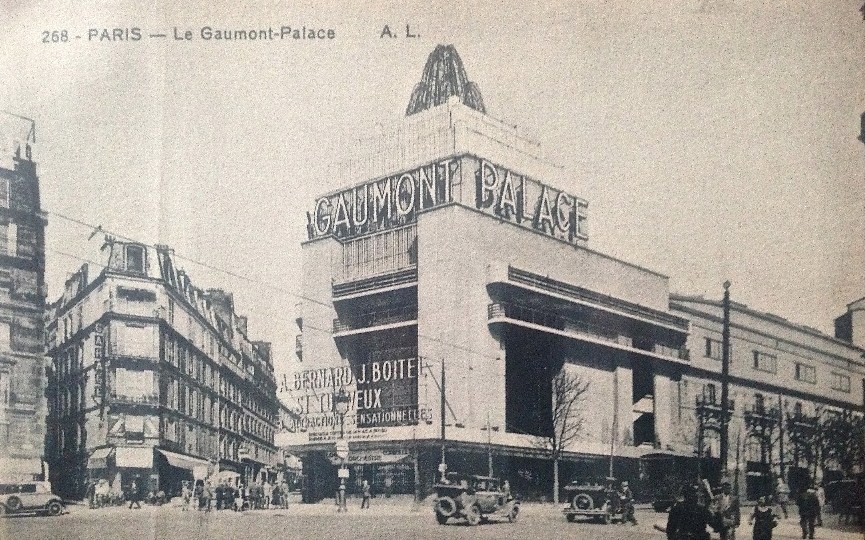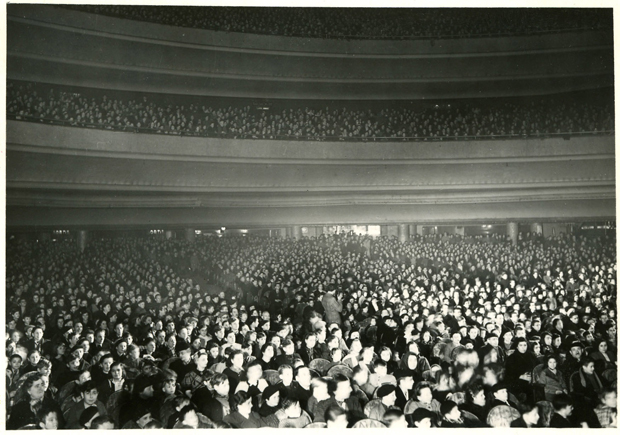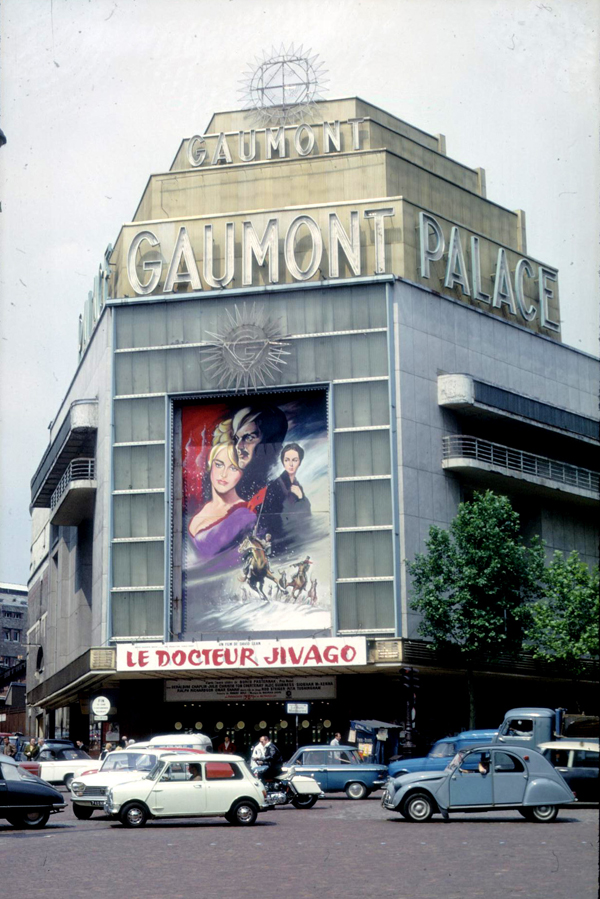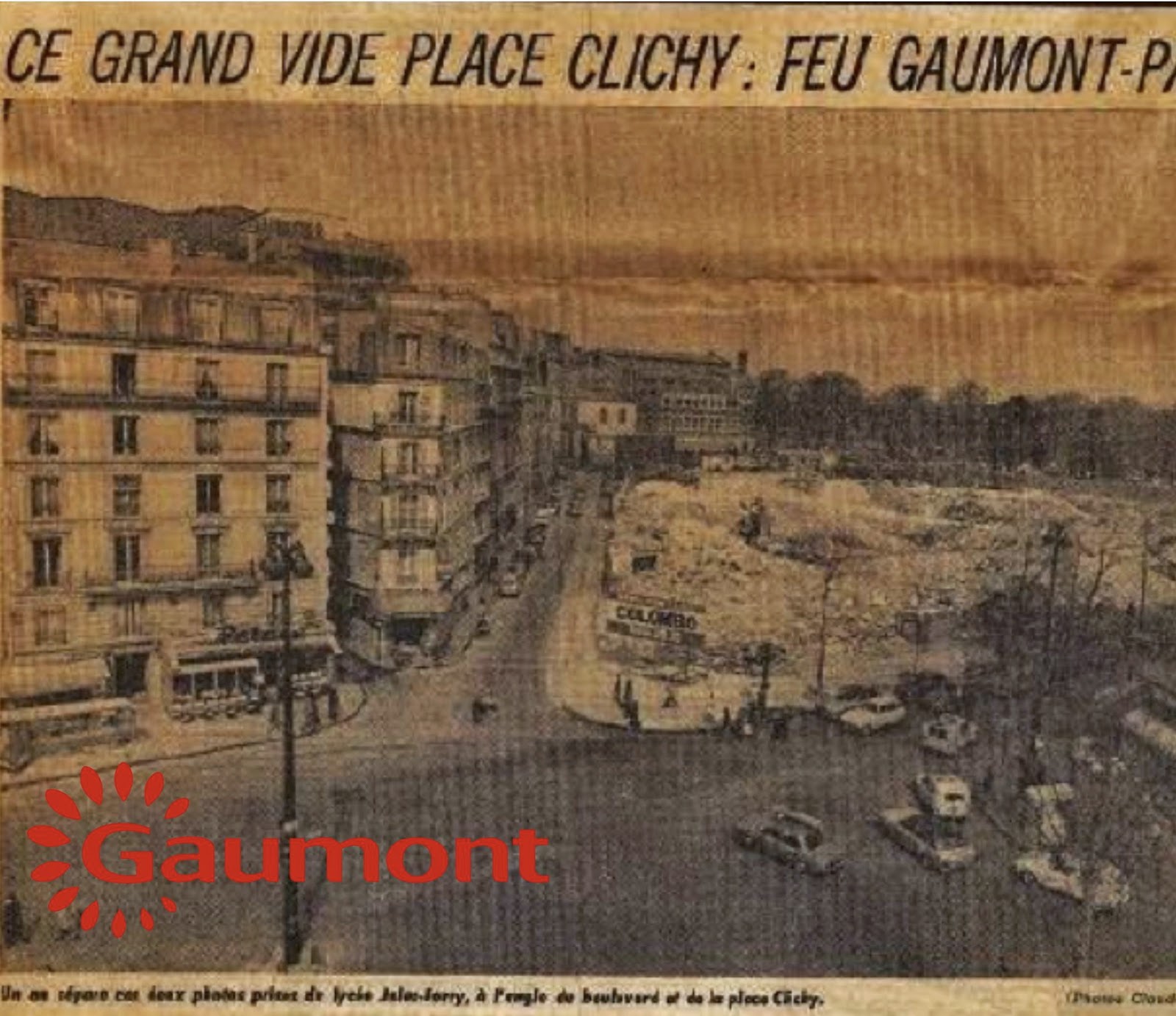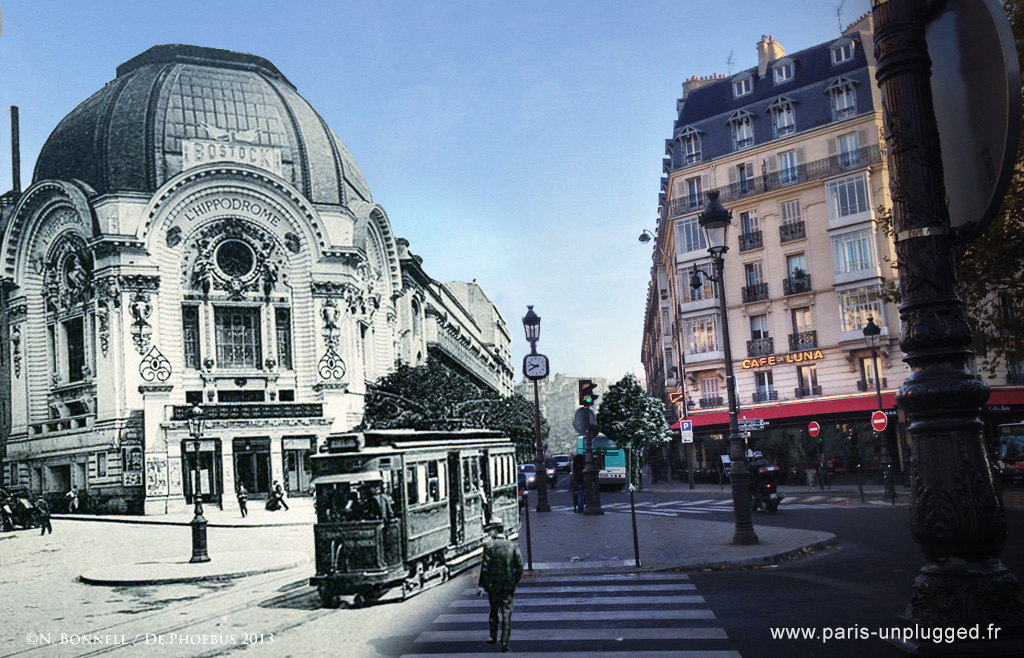
À l’angle des rues Forest et Caulaincourt, en lieu et place d’une célèbre enseigne de bricolage, se dressait autrefois un bâtiment très emblématique de l’Histoire du quartier.
Inauguré en 1900 à l’occasion de l’Exposition Universelle, l’Hippodrome, rebaptisé plus tard Hippo Palace était une gigantesque salle de spectacle conçue dans l’esprit des arènes romaines. Ses dimensions spectaculaires de 57 mètres sur 35 permettaient toutes les fantaisies. L’infrastructure pouvait alors accueillir jusqu’à 8000 spectateurs, un record pour l’époque. Les spectacles de cirque, équitation, dressage de fauve et les performances aquatiques faisaient la joie des parisiens de la Belle Époque.
Si la première représentation fut « Vercingétorix », l’endroit reste célèbre pour avoir accueilli entre autres, le spectacle de William Cody dit Buffalo Bill.
À partir de 1906, l’Hippodrome accueillit aussi des séances de cinéma. Exploité par Léon Gaumont jusqu’en 1908, celui ci rachètera les lieux deux ans plus tard. S’ouvre alors une nouvelle ère : celle du Gaumont Palace, qui deviendra le « Plus Grand Cinéma du Monde». L’inauguration de cette salle aux dimensions impressionnantes, aura lieu en 1911 avec la projection du film « La Tare », un mélodrame de Louis Feuillade. Une programmation variée perpétuera la tradition du spectacle au sens large.
En 1930, l’arrivée du parlant contraindra Gaumont à d’importants travaux d’aménagement. L’extérieur sera repensé dans un style Art Déco, faisant du coup disparaître la fameuse coupole de l’établissement. L’architecture de la salle sera optimisée, l’écran agrandi à 192 m2 et le nombre de places porté à 6000. Un grand orgue sera ajouté pour accompagner les derniers films muets.
Il faudra attendre 1954 pour qu’une seconde phase de travaux consolide la réputation de ce cinéma hors norme. Le nouvel écran atteindra désormais 600 m2.
En 1971, le film « Boulevard du Rhum » avec Bardot et Ventura sera un échec colossal. Gaumont devra faire face à d’importantes pertes financières. La société vendra le Gaumont Palace au groupe Accor l’année suivante. Le bâtiment sera détruit en 1974 et laissera sa place à un immeuble neuf.
________
One of the most emblematic buildings in the history of Montmartre once stood on the corner of Rue Forest and Rue Caulaincourt, on the site now occupied by a well-known DIY store. The Hippodrome – later renamed the Hippo Palace – was opened in 1900, just in time for the World’s Fair. It was an enormous entertainment space, designed in the spirit of an Ancient Roman arena. Its spectacular dimensions – 57 by 35 metres (187 by 114 feet) – allowed it to host even the most fantastical shows, holding up to 8,000 spectators, a record for the time. Magnificent shows featuring circus performers, trained horses, and wild animals brought joy to all of Paris throughout the years of the Belle Époque.
The Hippodrome’s first performance was ‘Vercingétrorix’ (named for the ancient Gaullish chieftain), but its most famous was probably a show by William Cody called ‘Buffalo Bill’.
From 1906, the Hippodrome was used as a cinema, run by Léon Gaumont who would later buy the entire building in 1908 and transform it into the Gaumont Palace, to be known as “The Greatest Cinema in the World”.
The cinema, with its remarkably grand dimensions, opened in 1911 with the screening of ‘La Tare’, a melodrama starring Louis Feuillade. Its varied programme of film screenings would leave a lasting influence on the cinematic tradition in general.
In 1930, the arrival of ‘talkies’ obliged Gaumont to undertake serious refurbishment works on the building, whose exterior was redesigned in a modern ‘Art Deco’ style, and whose infamous cupola was demolished. The auditorium, however, was greatly improved, with a larger screen measuring 192m2 (6292 feet) and the number of seats augmented to 6,000. A grand pipe organ was added, to accompany the last of the silent films to be shown.
It was not until 1954, however, that a second phase of construction would really mark the Gaumont Palace out from its competitors. The new screen measured an extraordinary 600 m2 (19682 feet).
In 1971, the film ‘Boulevard du Rhum’ (Rum Boulevard), staring Brigit Bardot and Lino Ventura, was a collosal failure, and caused Gaumont considerable financial difficulties. The Gaumont Palace was sold to the Accor group the following year, and the building was finally razed to the ground in 1974, replaced with a modern commercial unit.
Translation by Tim Mc Inerney
